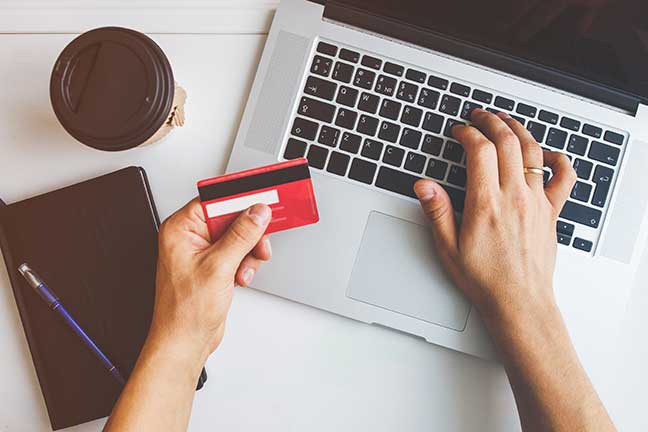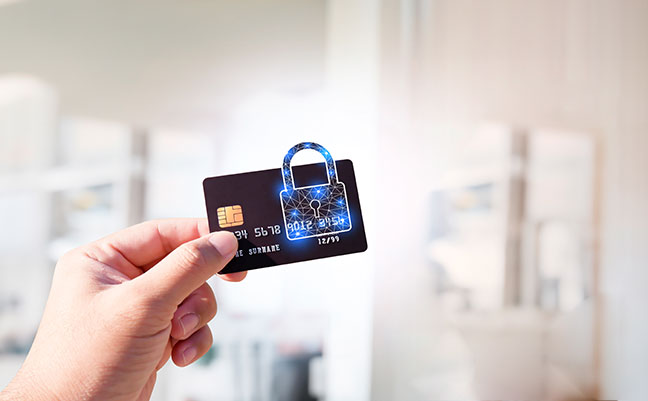You’ve probably heard of secured credit cards but aren’t quite sure what they are or how they work. Don’t worry, you’re definitely not alone. Secured cards are a bit different than regular credit cards so it’s normal to have some questions.
In this blog post, we’re going to explain exactly what a secured card is and how you can use one to establish or rebuild your credit to qualify for better cards down the road. By the time you’re finished, you’re going to feel like a secured card expert ready to make an informed decision about whether one of these cards is right for your situation.
What Is a Secured Credit Card?
Firstly — a secured credit card is a credit card designed for those looking to build or rebuild their credit. Unlike a regular credit card, a secured card requires a cash deposit that acts as your spending limit.
How Does It Work?
With a secured card, you deposit money as collateral, maybe $500, and that determines your credit limit. You can then use the card to make purchases, just like a regular credit card. As you use the card responsibly, the credit card issuer reports your activity to the credit bureaus. This helps establish a good payment pattern and boost your credit score over time. Once you’ve shown you can use credit well for at least 6-12 months, the card issuer could refund your deposit and convert your secured card to an unsecured card. Then, your credit limit will increase and your deposit will be refunded. Some banks may allow for credit limit increases and lower APRs over time.
With the right mindset and habits, a secured card can be an effective tool to build credit from scratch or rebuild. While not an ideal feature, the cash deposit minimizes the risk for the issuer while allowing you the opportunity to prove yourself as a trustworthy borrower. Once you’ve established a nice payment record, the world of unsecured credit cards warms up to you again.

The Pros and Cons of Secured Credit Cards
A secured credit card can be a useful tool to build your credit from scratch or rebuild damaged credit. But it does come with some pros and cons to consider.
The Pros
- First, it’s easier to qualify for a secured card versus an unsecured card, especially if you have bad or no credit.
- Secured cards also offer the same fraud protections and reporting to the credit bureaus as regular credit cards. So you can build credit with the safety and security of a true credit card.
The Cons
- Secured cards typically charge higher interest rates and fees than unsecured cards, so avoid interest charges by paying on time and in full each month.
- Your spending limit is capped by the amount you deposit, which may be inconvenient at times. You need to make additional deposits to increase your limit.
Best Secured Credit Cards to Apply to
The best secured credit cards are designed to help you build or rebuild your credit history. Here’re some of them:
Capital One Secured Mastercard
This popular secured card doesn’t charge an annual fee. You can deposit $49, $99 or $200 to get started, which will determine your credit limit. Capital One will automatically review your account after 6 months to see if they can increase your limit. They also review your account to see if you qualify to “graduate” to an unsecured card. This card reports to the three credit bureaus so you can build credit history.
Discover it® Secured Credit Card
Discover’s secured card has no annual fee and offers 2% cash back at restaurants and gas stations on up to $1,000 in combined purchases each quarter. Plus 1% cash back on all other purchases. They review your account after 8 months to determine if you qualify for an increased credit limit or to transition to an unsecured card. Discover is also one of the easiest credit card companies to work with if you need to make a late payment.
Citi® Secured Mastercard®
Citi’s secured Mastercard charges no annual fee and has a fully refundable $200 minimum security deposit. Your credit limit will match your deposit amount. Citi will review your account periodically to see if you qualify to “graduate” to an unsecured Citi card. They report account information to the three credit bureaus so you can establish a credit history with responsible use.
No matter which card you chose, staying consistent and using it responsibly is the most important thing. In about a year, you could hopefully qualify for an unsecured card and get your deposit back! Building or rebuilding credit takes time and patience, but these secured cards help set you on the right path.

Tips for Using a Secured Credit Card Responsibly
So we’ve discussed what a secured credit card does and some popular ones to try. But before you do — here’re some tips to get the most out of your card:
Make On-Time Payments
The most important thing you can do is pay your bill on time each month. Payment history is the biggest factor in your credit score, making up 35% of your total score. Set up automatic payments for at least the minimum amount due so you never miss a payment. Paying more than the minimum when you can will lower your balance and show you are a responsible borrower.
Low Balances
Keep your balances low relative to your credit limit. Your credit utilization ratio—the amount you owe divided by your credit limit—makes up 30% of your score. Aim for less than 30% at any given time. For example, if your limit is $500, don’t charge more than $150. Pay down your balance throughout the month as charges post to keep utilization low.
Limit Applications
Apply for new credit sparingly. New credit inquiries can lower your score slightly and too many accounts in a short period of time could be a red flag for lenders. As a rule of thumb, avoid applying to more than two new credit accounts every 6 months.
Check Your Credit Report
Monitor your credit report regularly to ensure there are no errors. Dispute any inaccuracies with the credit bureau immediately to get them corrected. Errors on your report could lower your score and make it harder to qualify for an unsecured card down the road. You can get free copies of your credit report from AnnualCreditReport.com.
Using your secured card responsibly by paying on time, keeping your balances low, limiting new applications, and checking your credit report often are the keys to building credit. Just stick with it, and within 6-12 months of responsible use, you could be in a good position to qualify for an unsecured credit card and get your deposit back. Staying dedicated and patient during the process will pay off!

Save Money Today With EASY Wireless!
Ready to start your credit journey? Well, EASY Wireless is here to help! We’re here to offer some amazing benefits to get started.. at no cost to you!
We’re offering free phone service plans with data so that you could search for the right balance transfer credit cards for you. If eligible, here’s what you could receive:
EASY Wireless Plan
- FREE Data
- FREE Unlimited Talk
- FREE Unlimited Text
- FREE SIM Card Kit and Activation
- Choose to Keep Your Number or Get a New One
To start with EASY Wireless, apply online by clicking below:
Start Saving Today!
Start Saving Today!
Or you can come to one of the EASY Wireless’s retail stores, where our customer service agents will help you apply for your benefits.


